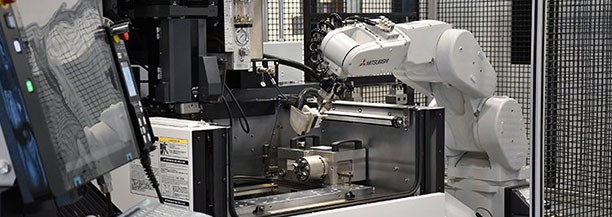Edge. Cloud. Digital Twin. AI. AR. VR. Cobots. Once they were buzzwords. Now, they are becoming technical realities in mid- to large-scale manufacturing plants in North America. Timelines for adoption will vary according to the industry sector, but a recent study indicated that 76 percent of manufacturers have a smart factory initiative in the works.
When implemented correctly, these initiatives will transform our plants – making the production of everything from prepared foods to jetliners more efficient, consistent, and more interconnected. Automation enables a level of accuracy and productivity beyond human capabilities – even in environments that would be considered unsafe for humans.
“In the mold and die industry, for example, we are seeing flexible manufacturing systems that take the time down from seven weeks to seven days,” said Dan Zeman, automation manager for MC Machinery Systems, Elk Grove Village, Illinois, a subsidiary of Mitsubishi. “A key technology to enable this is work management software, which coordinates robots and machines by processing programs, data, and remotely starting the machine to allow for long, untended operation. The other thing that is critical to next-level automation is the technologies surrounding palletized tools, fixtures, and work holding. With palletization, a robot can be employed to pick up a tool and place it in the chuck very easily and accurately. You can go from milling to inspection to the Sinker EDM in one continuous process with the robot transferring [the workpiece] from machine to machine. The operation can be scheduled, prioritized, and monitored by management software to efficiently sequence multiple steps.
To reach the full article from SME, click here

